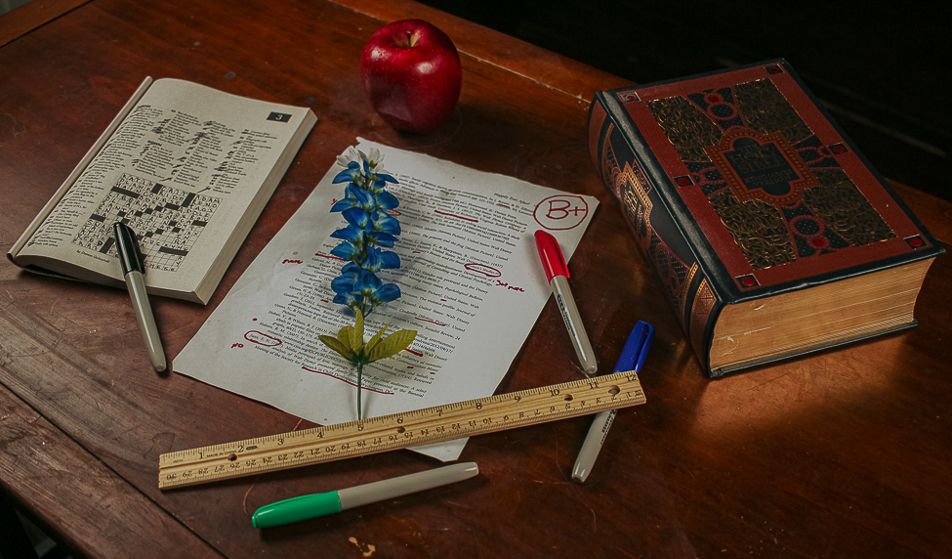Starting next school year, South San Antonio Independent School District will implement the controversial Texas Bluebonnet Learning curriculum throughout its public school programs.
The district, whose high school is one of the Top 10 feeder high schools for Texas A&M University-San Antonio, is joining other San Antonio school districts in its adoption of Bluebonnet Learning.
The Bluebonnet Learning curriculum contains a variety of educational content in the fields of math, reading, art and history. The curriculum, when relevant, references religious literature from various faiths.
Supporters say this is in line with Texas Education Code 28.002, which states Texas public school curricula shall contain “religious literature, including the Hebrew Scriptures (Old Testament) and New Testament, and its impact on history and literature.”
The decision to adopt Bluebonnet Learning was first made under South San’s previous superintendent of schools, Henry Yzaguirre. The implementation will continue under the new superintendent, Saul Hinojosa, who began at the district Feb. 19.
“A bunch of stakeholders, teachers, administrators from across the state got together, they looked at the standards, which are the TEKS (Texas Essential Knowledge and Skills), that we must teach at a particular grade level. So they started to write a curriculum that was going to be on grade level and challenge kids with the rigor needed for them to be successful,” Hinojosa said in an interview April 11. “We looked at it and we felt that that particular curriculum would give us the best option in order to move forward. When you look at SSISD currently, we have four F schools. The school district has struggled academically.”
Critics of Bluebonnet Learning worry about the curriculum’s inclusion of ‘Bible based materials.’
“We’re not teaching the Bible by any means,” Hinojosa said. “In order to safeguard that, based on some of the scrutiny, we are formulating a committee that is gonna look at these lessons, and if the committee feels that there’s something inappropriate, we would definitely find an alternative lesson.
“You don’t sacrifice a whole curriculum for 23 lessons that might mention Moses or Solomon. You know, they’re taught in a historical context, not to press any type of religion.”
Hinojosa said the district is not trying to teach creationism instead of science or to promote certain religions.
“As far as how we’re created and stuff like that, that’s not the objective; we’re not here to teach that one religion is more important than the other.”
Hinojosa said he hopes Bluebonnet learning will increase standardized test scores and raise standards for math and reading in SSISD schools.
Before serving as superintendent at South San, Hinojosa served as superintendent of schools in Somerset for 20 years. Hinojosa additionally worked in consulting for the National Institute for Excellence in Teaching.
“All surrounding districts, including SSISD, will be implementing Bluebonnet Learning into the classrooms beginning next year,” said Alexis LaFosse, director of communication and marketing for SSISD. “I believe it will be a great asset for our students and teachers. Students will have the resources and knowledge to do better in their testing and educational careers.
“I think this is a great step in the right direction for our district, and I’m excited to see our kids grow.”
Surrounding districts that have adopted Bluebonnet Learning include East Central ISD, Edgewood ISD, Harlandale ISD and Judson ISD, according to an article by the San Antonio Report. East Central and Harlandale high schools, as well as Judson Early College Academy, are among the Top 10 feeders for A&M-San Antonio.
Some educators around Texas, however, are still wary of the addition of religious material to public school lesson plans. One educator skeptical of Bluebonnet Learning’s religious content is Yanelle Stephens, early childhood teacher at Texas A&M University-San Antonio’s Young Jaguars after-school child care program.
“As an educator to a diverse group of children, I do believe that curriculum should be clear of any religious association,” Stephens said.
Stephens works with A&M-San Antonio’s after-school program.
The Texas branch of the American Civil Liberties Union opposes Bluebonnet Learning on the grounds of freedom of religion and speech
“Texas students and their families deserve a public-school education that promotes excellence, prepares students for the future, and upholds religious freedom. We urge you to refuse to adopt the Bluebonnet K-5 reading language arts curriculum recently made optional by the State Board of Education,” the union wrote in a Jan. 30 letter to Texas superintendents.
Bluebonnet Learning was developed by the Texas Education Agency, TEA, after the passage of HB 1605 by the 88th Texas Legislature. HB 1605 established a State Board of Education review process and directed TEA to develop a state-owned curriculum for Texas public schools.
“Bluebonnet Learning are state-developed instructional materials that provide teachers with the tools to foster student success,” Jake Kobersky, director of media relations for TEA, wrote in an email to The Mesquite April 18. “Developed using the latest cognitive science, Bluebonnet Learning instructional materials cover 100% of the Texas Essential Knowledge and Skills (TEKS) and provide a full suite of resources including scope and sequence, daily lesson plans, and student materials.”
Bluebonnet Learning is free to access digitally and is voluntary for school districts to adopt. Printed versions of the curriculum will, however, cost schools a printing fee.
To support the adoption of Bluebonnet Learning, the State Board of Education will provide $40 per student per year for districts to acquire what they call high-quality instructional material. They will also provide an additional $20 per student to cover the cost of printing Bluebonnet Learning textbooks if physical materials are needed.
TEA is a state organization that oversees Texas’s public education programs. It is headed by Texas Commissioner of Education Mike Morath. Morath was appointed by Gov. Greg Abbott in Jan. 2016.
Abbott made a public statement regarding Bluebonnet Learning Nov. 22 2024, via a post on X.
“Bluebonnet Learning will bring students back to the basics of education,” Abbott posted. “This is a critical step to provide students with the fundamentals to lead successful lives.”
The Bluebonnet Learning name and branding was announced by TEA Oct. 16, 2024.
The district is expected to roll out the curriculum in the academic year of 2025-2026






